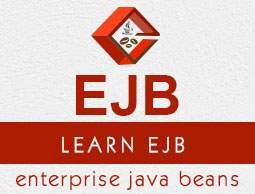EJB - Interceptors
EJB 3.0 provides specification to intercept business methods calls using methods annotated with @AroundInvoke annotation. An interceptor method is called by ejbContainer before business method call it is intercepting. Following is the example signature of an interceptor method
@AroundInvoke
public Object methodInterceptor(InvocationContext ctx) throws Exception {
System.out.println("*** Intercepting call to LibraryBean method: "
+ ctx.getMethod().getName());
return ctx.proceed();
}
Interceptor methods can be applied or bound at three levels.
Default − Default interceptor is invoked for every bean within deployment.Default interceptor can be applied only via xml (ejb-jar.xml).
Class − Class level interceptor is invoked for every method of the bean. Class level interceptor can be applied both by annotation of via xml(ejb-jar.xml).
Method− Method level interceptor is invoked for a particular method of the bean. Method level interceptor can be applied both by annotation of via xml(ejb-jar.xml).
We are discussing Class level interceptor here.
Interceptor Class
package com.howcodex.interceptor;
import javax.interceptor.AroundInvoke;
import javax.interceptor.InvocationContext;
public class BusinessInterceptor {
@AroundInvoke
public Object methodInterceptor(InvocationContext ctx) throws Exception {
System.out.println("*** Intercepting call to LibraryBean method: "
+ ctx.getMethod().getName());
return ctx.proceed();
}
}
Remote Interface
import javax.ejb.Remote;
@Remote
public interface LibraryBeanRemote {
//add business method declarations
}
Intercepted Stateless EJB
@Interceptors ({BusinessInterceptor.class})
@Stateless
public class LibraryBean implements LibraryBeanRemote {
//implement business method
}
Example Application
Let us create a test EJB application to test intercepted stateless EJB.
| Step |
Description |
| 1 |
Create a project with a name EjbComponent under a package com.howcodex.interceptor as explained in the EJB - Create Application chapter. You can also use the project created in EJB - Create Application chapter as such for this chapter to understand intercepted EJB concepts. |
| 2 |
Create LibraryBean.java and LibraryBeanRemote under package com.howcodex.interceptor as explained in the EJB - Create Application chapter. Keep rest of the files unchanged. |
| 3 |
Clean and Build the application to make sure business logic is working as per the requirements. |
| 4 |
Finally, deploy the application in the form of jar file on JBoss Application Server. JBoss Application server will get started automatically if it is not started yet. |
| 5 |
Now create the ejb client, a console based application in the same way as explained in the EJB - Create Application chapter under topic Create Client to access EJB. |
EJBComponent (EJB Module)
LibraryBeanRemote.java
package com.howcodex.interceptor;
import java.util.List;
import javax.ejb.Remote;
@Remote
public interface LibraryBeanRemote {
void addBook(String bookName);
List getBooks();
}
LibraryBean.java
package com.howcodex.interceptor;
import java.util.ArrayList;
import java.util.List;
import javax.ejb.Stateless;
import javax.interceptor.Interceptors;
@Interceptors ({BusinessInterceptor.class})
@Stateless
public class LibraryBean implements LibraryBeanRemote {
List<String> bookShelf;
public LibraryBean() {
bookShelf = new ArrayList<String>();
}
public void addBook(String bookName) {
bookShelf.add(bookName);
}
public List<String> getBooks() {
return bookShelf;
}
}
As soon as you deploy the EjbComponent project on JBOSS, notice the jboss log.
JBoss has automatically created a JNDI entry for our session bean − LibraryBean/remote.
We will using this lookup string to get remote business object of type −
com.howcodex.interceptor.LibraryBeanRemote
JBoss Application Server Log Output
...
16:30:01,401 INFO [JndiSessionRegistrarBase] Binding the following Entries in Global JNDI:
LibraryBean/remote - EJB3.x Default Remote Business Interface
LibraryBean/remote-com.howcodex.interceptor.LibraryBeanRemote - EJB3.x Remote Business Interface
16:30:02,723 INFO [SessionSpecContainer] Starting jboss.j2ee:jar=EjbComponent.jar,name=LibraryBean,service=EJB3
16:30:02,723 INFO [EJBContainer] STARTED EJB: com.howcodex.interceptor.LibraryBeanRemote ejbName: LibraryBean
16:30:02,731 INFO [JndiSessionRegistrarBase] Binding the following Entries in Global JNDI:
LibraryBean/remote - EJB3.x Default Remote Business Interface
LibraryBean/remote-com.howcodex.interceptor.LibraryBeanRemote - EJB3.x Remote Business Interface
...
EJBTester (EJB Client)
jndi.properties
java.naming.factory.initial=org.jnp.interfaces.NamingContextFactory
java.naming.factory.url.pkgs=org.jboss.naming:org.jnp.interfaces
java.naming.provider.url=localhost
EJBTester.java
package com.howcodex.test;
import com.howcodex.stateful.LibraryBeanRemote;
import java.io.BufferedReader;
import java.io.FileInputStream;
import java.io.IOException;
import java.io.InputStreamReader;
import java.util.List;
import java.util.Properties;
import javax.naming.InitialContext;
import javax.naming.NamingException;
public class EJBTester {
BufferedReader brConsoleReader = null;
Properties props;
InitialContext ctx;
{
props = new Properties();
try {
props.load(new FileInputStream("jndi.properties"));
} catch (IOException ex) {
ex.printStackTrace();
}
try {
ctx = new InitialContext(props);
} catch (NamingException ex) {
ex.printStackTrace();
}
brConsoleReader =
new BufferedReader(new InputStreamReader(System.in));
}
public static void main(String[] args) {
EJBTester ejbTester = new EJBTester();
ejbTester.testInterceptedEjb();
}
private void showGUI() {
System.out.println("**********************");
System.out.println("Welcome to Book Store");
System.out.println("**********************");
System.out.print("Options \n1. Add Book\n2. Exit \nEnter Choice: ");
}
private void testInterceptedEjb() {
try {
int choice = 1;
LibraryBeanRemote libraryBean =
LibraryBeanRemote)ctx.lookup("LibraryBean/remote");
while (choice != 2) {
String bookName;
showGUI();
String strChoice = brConsoleReader.readLine();
choice = Integer.parseInt(strChoice);
if (choice == 1) {
System.out.print("Enter book name: ");
bookName = brConsoleReader.readLine();
Book book = new Book();
book.setName(bookName);
libraryBean.addBook(book);
} else if (choice == 2) {
break;
}
}
List<Book> booksList = libraryBean.getBooks();
System.out.println("Book(s) entered so far: " + booksList.size());
int i = 0;
for (Book book:booksList) {
System.out.println((i+1)+". " + book.getName());
i++;
}
} catch (Exception e) {
System.out.println(e.getMessage());
e.printStackTrace();
}finally {
try {
if(brConsoleReader !=null) {
brConsoleReader.close();
}
} catch (IOException ex) {
System.out.println(ex.getMessage());
}
}
}
}
EJBTester performs the following tasks −
Load properties from jndi.properties and initialize the InitialContext object.
In testInterceptedEjb() method, jndi lookup is done with the name - "LibraryBean/remote" to obtain the remote business object (stateless EJB).
Then user is shown a library store User Interface and he/she is asked to enter a choice.
If the user enters 1, the system asks for book name and saves the book using stateless session bean addBook() method. Session Bean is storing the book in its instance variable.
If the user enters 2, the system retrieves books using stateless session bean getBooks() method and exits.
Run Client to Access EJB
Locate EJBTester.java in project explorer. Right click on EJBTester class and select run file.
Verify the following output in Netbeans console.
run:
**********************
Welcome to Book Store
**********************
Options
1. Add Book
2. Exit
Enter Choice: 1
Enter book name: Learn Java
**********************
Welcome to Book Store
**********************
Options
1. Add Book
2. Exit
Enter Choice: 2
Book(s) entered so far: 1
1. Learn Java
BUILD SUCCESSFUL (total time: 13 seconds)
JBoss Application Server Log Output
Verify the following output in JBoss Application server log output.
....
09:55:40,741 INFO [STDOUT] *** Intercepting call to LibraryBean method: addBook
09:55:43,661 INFO [STDOUT] *** Intercepting call to LibraryBean method: getBooks


